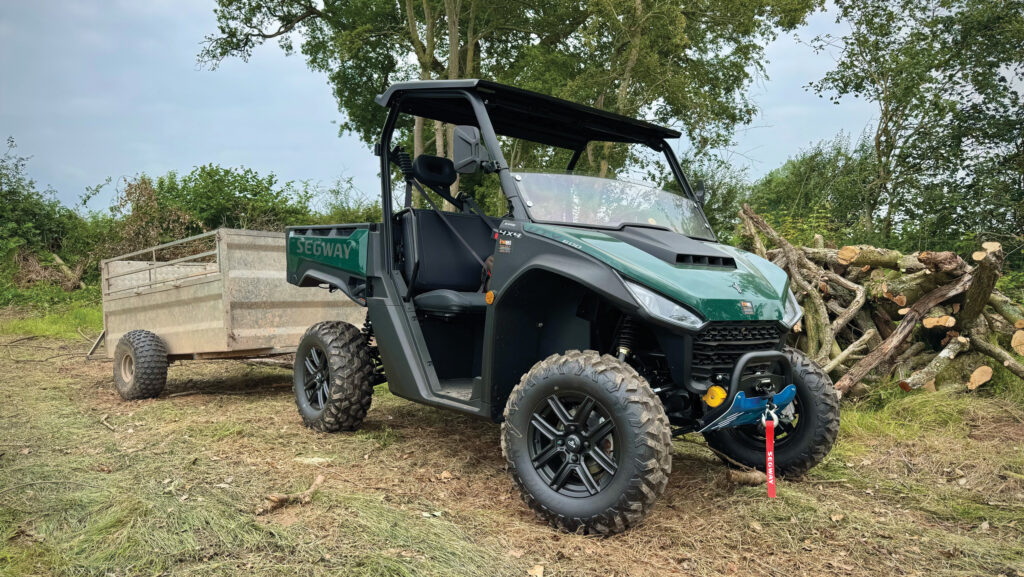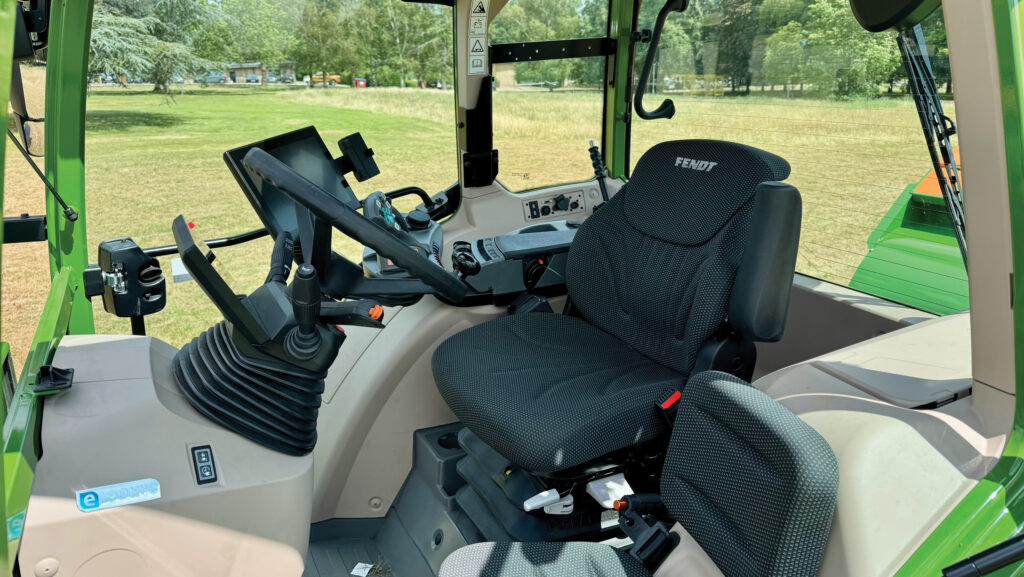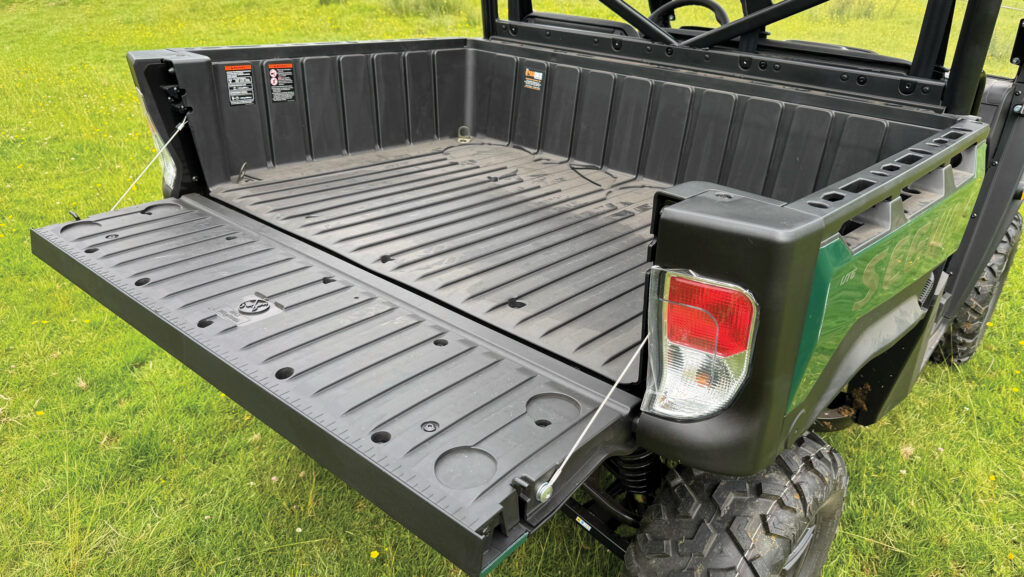On test: Small Segway UT6 UTV is nimble but not a workhorse
 © MAG/Oliver Mark
© MAG/Oliver Mark The Chinese maker Segway is best known for its stand-on hoverboards, but broke cover with its debut range of ATVs in 2021.
It has since supplemented a modest selection of sit-astride vehicles with several UTVs, dubbed Fuglemans.
The UT6 is the most recent addition to this brigade; it’s a smaller alternative to the 1,000cc, 105hp UT10, which is also available as a long-wheelbase six-seater.
Farmers Weekly’s machinery editor, Oliver Mark, tests the machine and gives his verdict.
See also: First impressions: Segway Fugleman UT10X Deluxe UTV
Quick verdict
The no-frills UT6 offers manoeuvrability akin to an ATV, making it a cheap and handy runaround for light-duty work.
It also comes with a good-sized load bed and generally solid build quality, only let down by vulnerable electrical wires and an imprecise drivestick that makes it irritatingly hard to find a desired range.
The firm’s more powerful UT10 will be a better bet for dragging trailers and handling heavier loads.
- Price £9,500
- Best for Nimble size
- Worst for Untidy wiring
The UT6 makes do with a waspish, in-house-built 567cc singe cylinder that puts out 44hp and 50Nm.
This is adequate to propel itself, its occupants and a modest cargo, but won’t suffice for hard towing up steep, muddy hills.
Allied to this is a CV Tech transmission complete with electronic selection of two- and four-wheel drive, and front and rear differential locks.
They are simple enough to operate, but the selection of high, low and park is a slapdash affair through a seemingly ungated drivestick, which makes it mightily tricky to find the target range at first attempt.
Park position is particularly elusive, especially from reverse, such that drivers often have to move it up to a forward range before having a second attempt.
That all means it’s easier to use the far simpler handbrake – released via a pull-and-twist mechanism – when hopping out to open or close a gate.
Our test model was also pegged back by a 30kph restrictor. This is fitted as standard in the factory and should be deleted by dealers prior to sale, but the software code was unavailable at the time of testing.
This made for laboured road travel, with the system crudely interrupting acceleration to leave the engine clattering and farting as ground speed teetered on the limit.
That said, it towed a lightly loaded trailer just as well as the bigger-engined Aodes WorkCross to its 30kph limit.
And it performs much like the competition on downhill runs too, replicating the common theme of these Asian imports with lame engine braking that is quickly overwhelmed in the face of a steep slope.

© MAG/Oliver Mark
What’s the cab like?
Enclosed variants are available, but limited UK stock left us with the limited protection of a half-height windscreen.
This arrangement does at least keep wind off bodies, but drivers will still be picking flies from between their teeth long after the engine is switched off.
The layout is basic, with a single seat and twin bench. The latter is designed to lift to free further footwell space for storage, though protruding seatbelt sockets put paid to that.
These prevent the base being raised beyond 45deg and require it to be lashed in position to prevent it coming crashing down on the head of an unsuspecting canine companion.
The sockets also give out a disconcerting high-frequency vibration that makes it feel as though the driver’s pocketed phone is constantly buzzing with calls.
But there are plenty of good points, starting with easy access thanks to a relatively low floor and short seat bases. Legroom isn’t abundant – no surprise, as it’s a small vehicle – but views out are excellent.
Going without the extra framework of a cab obviously plays a part, but there’s also a neat setup behind occupants’ heads.
Where most of the competition has chunky metalwork, Segway opts for a shallow V-shaped frame that leaves a clear gap through the middle, giving an unimpeded view rearwards when reversing.
The only letdown in this department is the grab handle on the A-pillar, which blocks sight to the offside wing mirror.
Build quality is generally solid. The main letdowns are too many unprotected electrical connections under the load bed, and the apparent use of a Tupperware lid as a wobbly see-through cover on the central cubby.
The big glove box in front of the passenger is a pain to access, too, as opening and closing it relies on using the ignition key.
And the start-up procedure is also tedious, as it involves waiting for a silly graphic to display on the dash.
Is it a workhorse?
The UT6 is a light-duty vehicle that’s probably not up to the cut and thrust of life on a busy hill farm.
There’s only a small bull bar and belly plate to protect the front and underneath, and no any rear mudguards to catch mud splatter.
This is an issue given the aforementioned number of untidy electrical connections left exposed under the bed.
The tub itself – manual tipping, handles both sides – is generously proportioned relative to the size of the buggy, and sturdy enough.
However, the plastic tailgate is extremely lightweight and lash points are limited to a ring in each corner.
The central numberplate mount also needs repositioning to avoid it skinning knuckles when coupling a trailer.
But it’s perfectly nice to drive, the suspension tolerates bumps, and the turning circle is sharp. A Nova front winch is included as an added bonus.
Likes and gripes
Likes
- Nimble
- Decent sized load bed
- Good visibility
Gripes
- Untidy electrical connections
- Vague drivestick
- Bench seat doesn’t fold up properly
Segway Fugleman UT6

© MAG/Oliver Mark
- Engine 567cc single-cylinder petrol
- Max power/torque 44hp/50Nm
- Transmission Belt CVT
- Four-wheel drive Switchable with open rear diff mode
- Suspension travel 231mm front, 264mm rear
- Max towing capacity 700kg
- Load bed capacity 454kg
- Ground clearance 320mm
- Dry weight 762kg
- Starting price £9,500

